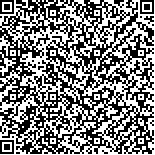| 引用本文: |
唐雪勇;杨志波;王建湘;.白癜风聚类分析的中医辨证分型规律研究[J].湖南中医药大学学报,2012,32(1):72-74[点击复制] |
|
| |
|
|
| 本文已被:浏览 3104次 下载 20次 |
| 白癜风聚类分析的中医辨证分型规律研究 |
| 唐雪勇;杨志波;王建湘; |
| (湖南中医药大学第二附属医院皮肤科) |
| 摘要: |
| 目的探讨白癜风中医证候分布特点及辨证分型规律。方法运用数据挖掘技术对200例白癜风患者症状体征及相关因素进行聚类及频数分析。结果证候聚类聚为5类,通过综合分析得出各类证型及比例为:气血不和型(49,24.5%)、肝肾不足型(44,22.0%)、湿热内蕴型(31,15.5%)、脾胃虚弱型(38,19.0%)、气滞血瘀型(38,19.0%)。结论白癜风聚类证型以气血不和型及肝肾不足型多见,其次为气滞血瘀型、脾胃虚弱型和湿热内蕴型,突出了皮损辨证在白癜风辨证分型中的重要性。 |
| 关键词: 白癜风 辨证分型 聚类分析 规范化研究 |
| DOI: |
| |
| 基金项目:国家中医药管理局“十一五”重点学科中医皮肤科资助 |
|
| Study of TCM syndrome differentiation laws on cluster analysis of Vitiligo |
| TANG Xue-yong,YANG Zhi-bo,WANG Jian-xiang |
| (Department of Dermatology,Second Affiliated Hospital,TCM University of Hunan,Changsha,Hunan 410005,China) |
| Abstract: |
| (Abstract〕 Objective To study the distributed natures of TCM syndromes of vitiligo and the
law of TCM syndrome differentiation. Methods Data of symptoms and related factors of 200 vitili-
go cases were collected and analyzed by methods of Data Mining(clustering and frequency analysis).
Results Through comprehensive analysis, the syndromes were grouped into five clusters:the pattern of qi-blood disharmony (49,24.5%), the pattern of deficiency of liver and kidney (44,22.0%), the
pattern of endoretention of damp heat (31,15.5%), the pattern of weakness of the spleen and the stomach (38,19.0%),the pattern of qi stagnation and blood stasis (38,19.0%).Conclusion
The clustering of vitiligo syndromes shows the most frequent are qi -blood disharmony
and deficiency of liver and kidney, followed by the relatively less popular patterns of endoretention
of damp heat, weakness of the spleen and the stomach, and qi
stagnation and blood stasis. The results highlight the importance of lesions in the differentiation of syndromes. |
| Key words: Vitiligo syndrome differentiation and classification cluster analysis standardization study |
|

二维码(扫一下试试看!) |
|
|
|
|




